 Sunday, October 26
Sunday, October 26 PBB is indeed the biggest bully in Sarawak ~ ref Malaysiakini
Voices of dissent among component parties of the Barisan Nasional are becoming loud and clear now against the 27-year old administration of Abdul Taib Mahmud. Leaders of Sarawak United People’s Party (SUPP), for example, have been grumbling over the way the party has been treated over the appointment of the mayor for Kuching south city council. The appointment of mayor usually comes from SUPP, and its failure to retain the post had become an issue in the 2006 state election contributing perhaps to the loss of six seats to the Opposition. This has made SUPP unhappy.
In Parti Rakyat Sarawak (PRS), some leaders have expressed unhappiness with the way Taib has handled the PRS crisis. Since Larry Sng has been expelled from the party, PRS leaders want him replaced as assistant minister. But Taib still retains Larry.
PRS has also demanded why it is not given chairmanships of some government-linked companies (GLCs) and the way NCR land has been seized from landowners. Not only compensations are not paid, the landowners have also been evicted from their ancentral land now declared as “State land”. James Masing’s ministry of land development has come up with proper land development to deal with NCR land and applications have been submitted, but the applications are either delayed or simply kept in the files.
It is understood that Masing has sent a note to the chief minister seeking explanations as to why no actions have been taken on his projects, some of which he submitted three or four years ago. He has even questioned whether this government is really serious to see that the NCR land is developed properly.
As seen by his supporters, Masing is clearly a powerless minister. He even does not have a say in SALCRA’s policies and development, although it is under his ministry. The chairman of the board is more powerful than him just because he is Alfred Jabu, deputy chief minister. Masing has complained to Taib about this strange arrangement, but Taib simply refuses to listen to him.
All these complaints have made Masing unpopular with Taib Mahmud, because Taib does not tolerate anyone questioning his authority. This is what had happened to Daniel Tajem when he served under Taib's cabinet in the 1980s.
So is Dr. James Masing becoming the second “Daniel Tajem” to have fallen out of favour with Abdul Taib Mahmud, the Sarawak’s longest serving and most powerful chief minister?
Like Tajem, Masing was once the “blue-eyed” boy of Taib Mahmud, especially during the height of the leadership crisis in Parti Bansa Dayak Sarawak (PBDS) in 2003 and this crisis led to the deregistration of the party on 21 October 2004; and he helped Masing to form PRS and to admit it to the BN family.
But things have gone wrong since 2006 when PRS was bogged down with a leadership crisis of its own and the way things are going now between Masing and Taib seem to confirm the “cool” relationship between the two men.
Masing was reported to have told his supporters recently that they must be prepared for the worst as they “have been squeezed” now. Masing did not explain what he meant by the word “squeezed”.
Certainly, the strong statement made by Beginda Minda on 25 October 2008 accusing PBB, and indirectly Taib Mahmud, of being a big bully is making things worse between PRS and PBB and between Masing and Taib. Beginda, publicity officer of PRS’s Baleh Division cited a number of examples to prove his point.
Among others, he specifically mentioned the nomination of candidates in the March election for the parliamentary constituencies of Lubok Antu and Sri Aman. Although Beginda did not reveal much detail, let me quote an excerpt from a book, The Broken Shield under the heading “Nyallau and Masir are PBB men?"
“Both William Nyallau and Masir Kujat were alleged to have been PBB men planted in PRS. Their selection was not done by Masing, but by PBB. Masing’s choice for Lubok Antu was a young professional, Desmond Sateng, who had been with Masing since the days of PBDS. But his choice was rejected. Insiders in PRS said that the District Officer, Lubok Antu Nelson Mujah had prepared a ‘resume’ for Nyallau and strongly recommended him to be a candidate. That resume was alleged to have been passed to Alfred Jabu and then to the chief minister.
“When Masing heard about Nyallau’s candidacy on the morning of 24 February, he immediately phoned Desmond that the seat had been ‘hijacked’ and apologized to him for missing the boat. As Desmond was young, Masing hoped he would be patient.
“As for Masir, it was a different story. Although Masir worked as a Principal Assistant Secretary in the office of the minister of land development, Dr. James Masing, he was not the first choice to contest. Masing had picked Doris Brodie, a loyalist to be the candidate for Sri Aman. But when the list came out, it was Masir who was named the candidate. Masing, Mong Dagang, the State Assemblyman for Bukit Begunan, and their supporters were unhappy. But there was nothing they could do as the decision had been made by Taib Mahmud.
“According to Donald Lawan, former State Assemblyman for Bukit Begunan and now a businessman, Masir’s selection was because of him. ‘For two hours I met the chief minister regarding Masir’s candidacy. I am responsible for his selection and not Masing,’ he said.
“Lawan’s open bragging about his closeness with the chief minister and his wealth not only alienated Mong’s supporters, but also seemed to confirm PRS members’ suspicion that Masir was a PBB man planted through Lawan. Lawan was and is known to be a PBB man ever since he was interested in politics in the 1980s.”
In West Malaysia, MCA, MIC and Gerakan have started to question the “big brother’s role” of UMNO and have blamed UMNO president, Abdullah Ahmad Badawi for their defeats. Abdullah is now accepting the blame and is handing over the leadership of UMNO and by convention the prime ministership to his deputy.
In Parliament last week, the Ulu Rajang MP, Billy Abit Joo, PRS vice president showed that he dared to be different when he joined the ranks of Opposition MPs in signing a petition to review the controversial Internal Security Act (ISA). He is a true leader of the people.
Now Beginda has started the ball rolling. But will the ball continue to roll in an effort to expose abuses of power, cases of bully, discrimination, injustices and corruption in the State? Will you be one of them from BN to continue to kick the ball?
In Parti Rakyat Sarawak (PRS), some leaders have expressed unhappiness with the way Taib has handled the PRS crisis. Since Larry Sng has been expelled from the party, PRS leaders want him replaced as assistant minister. But Taib still retains Larry.
PRS has also demanded why it is not given chairmanships of some government-linked companies (GLCs) and the way NCR land has been seized from landowners. Not only compensations are not paid, the landowners have also been evicted from their ancentral land now declared as “State land”. James Masing’s ministry of land development has come up with proper land development to deal with NCR land and applications have been submitted, but the applications are either delayed or simply kept in the files.
It is understood that Masing has sent a note to the chief minister seeking explanations as to why no actions have been taken on his projects, some of which he submitted three or four years ago. He has even questioned whether this government is really serious to see that the NCR land is developed properly.
As seen by his supporters, Masing is clearly a powerless minister. He even does not have a say in SALCRA’s policies and development, although it is under his ministry. The chairman of the board is more powerful than him just because he is Alfred Jabu, deputy chief minister. Masing has complained to Taib about this strange arrangement, but Taib simply refuses to listen to him.
All these complaints have made Masing unpopular with Taib Mahmud, because Taib does not tolerate anyone questioning his authority. This is what had happened to Daniel Tajem when he served under Taib's cabinet in the 1980s.
So is Dr. James Masing becoming the second “Daniel Tajem” to have fallen out of favour with Abdul Taib Mahmud, the Sarawak’s longest serving and most powerful chief minister?
Like Tajem, Masing was once the “blue-eyed” boy of Taib Mahmud, especially during the height of the leadership crisis in Parti Bansa Dayak Sarawak (PBDS) in 2003 and this crisis led to the deregistration of the party on 21 October 2004; and he helped Masing to form PRS and to admit it to the BN family.
But things have gone wrong since 2006 when PRS was bogged down with a leadership crisis of its own and the way things are going now between Masing and Taib seem to confirm the “cool” relationship between the two men.
Masing was reported to have told his supporters recently that they must be prepared for the worst as they “have been squeezed” now. Masing did not explain what he meant by the word “squeezed”.
Certainly, the strong statement made by Beginda Minda on 25 October 2008 accusing PBB, and indirectly Taib Mahmud, of being a big bully is making things worse between PRS and PBB and between Masing and Taib. Beginda, publicity officer of PRS’s Baleh Division cited a number of examples to prove his point.
Among others, he specifically mentioned the nomination of candidates in the March election for the parliamentary constituencies of Lubok Antu and Sri Aman. Although Beginda did not reveal much detail, let me quote an excerpt from a book, The Broken Shield under the heading “Nyallau and Masir are PBB men?"
“Both William Nyallau and Masir Kujat were alleged to have been PBB men planted in PRS. Their selection was not done by Masing, but by PBB. Masing’s choice for Lubok Antu was a young professional, Desmond Sateng, who had been with Masing since the days of PBDS. But his choice was rejected. Insiders in PRS said that the District Officer, Lubok Antu Nelson Mujah had prepared a ‘resume’ for Nyallau and strongly recommended him to be a candidate. That resume was alleged to have been passed to Alfred Jabu and then to the chief minister.
“When Masing heard about Nyallau’s candidacy on the morning of 24 February, he immediately phoned Desmond that the seat had been ‘hijacked’ and apologized to him for missing the boat. As Desmond was young, Masing hoped he would be patient.
“As for Masir, it was a different story. Although Masir worked as a Principal Assistant Secretary in the office of the minister of land development, Dr. James Masing, he was not the first choice to contest. Masing had picked Doris Brodie, a loyalist to be the candidate for Sri Aman. But when the list came out, it was Masir who was named the candidate. Masing, Mong Dagang, the State Assemblyman for Bukit Begunan, and their supporters were unhappy. But there was nothing they could do as the decision had been made by Taib Mahmud.
“According to Donald Lawan, former State Assemblyman for Bukit Begunan and now a businessman, Masir’s selection was because of him. ‘For two hours I met the chief minister regarding Masir’s candidacy. I am responsible for his selection and not Masing,’ he said.
“Lawan’s open bragging about his closeness with the chief minister and his wealth not only alienated Mong’s supporters, but also seemed to confirm PRS members’ suspicion that Masir was a PBB man planted through Lawan. Lawan was and is known to be a PBB man ever since he was interested in politics in the 1980s.”
In West Malaysia, MCA, MIC and Gerakan have started to question the “big brother’s role” of UMNO and have blamed UMNO president, Abdullah Ahmad Badawi for their defeats. Abdullah is now accepting the blame and is handing over the leadership of UMNO and by convention the prime ministership to his deputy.
In Parliament last week, the Ulu Rajang MP, Billy Abit Joo, PRS vice president showed that he dared to be different when he joined the ranks of Opposition MPs in signing a petition to review the controversial Internal Security Act (ISA). He is a true leader of the people.
Now Beginda has started the ball rolling. But will the ball continue to roll in an effort to expose abuses of power, cases of bully, discrimination, injustices and corruption in the State? Will you be one of them from BN to continue to kick the ball?










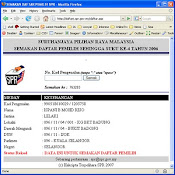







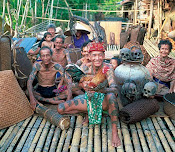







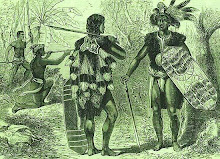





















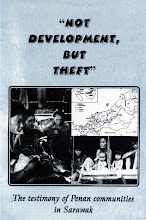
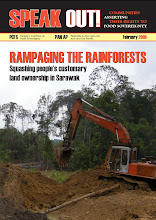





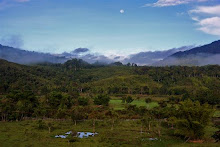



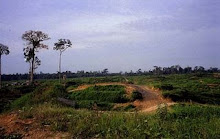

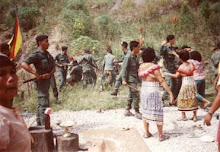





















16 comments:
Headhunter
I hope more and more Sarawakians will hear this and decide that enough is enough. Keep going, bro.
It is not fair to squarely point at Taib. There are other hands at play and Taib is the final hand. To stay in power one need support. Support can be financially of through the people. But keeping the people misinform and lack of inform one can control the people. But to cement this one must be financially stable. And to be financially stable the most free way is the NCR on top of setting up companies. So to be financially strong one must be abang adik with another party to bully the adik angkat lah.
In a way Anonymous is right. Taib's road to absolute power has been aided and abetted by various parties in return for substantial financial rewards. They know who they are, the Chinese, Dayaks and Malays, but what will their ill-gotten gains reap for them and their descendants?
Will you plunder and loot from your "home"?
Only if you only know that "home" is not your own home.
BN leaders don't think of Malaysia, as their home.
And home is somewhere else for them. Ask Yemeni Baldy or Kerala's Mamak Kutty, where is home actually?
They obviously don't love and don't really care what happens to this home.
That's why its easy for them to plunder and loot this home because it's not their home. And they would silence anyone who stands in their way.
What is going to happen to our motherland in the hands of aliens?
In the hands of aliens...what holds the future of our Motherland? Need it be sliced into two parts ... for only by then perhaps the ruling elites and their business cronies would come to realise....that they had been wrong?!
I doubt what you wrote is true because you have not really verify your source. You only hear from one person or one source. Why don't you hear from all angle before making a conclusion. Anyway it is always easy to make false accusation but it is always hard to provide concrete evidence. But, it is enough to listen just to one source and twist you facts? A more credible blogger will find it from the source. It looks like your source is no longer credible because that guy Baginda is not even a PRS member as alleged in yesterday paper. So who do we believe, Baginda once stood against a BN man in an election years ago and he should not be admitted to PRS. So what he do is to smear the BN saying that certain Party bully another party. But it was he himself who is doing the bully. Baginda used to be Datuk Sng body guard, before and because of his association with Sng, it is only logical to put Masing in the bad limelight. I don't believe that CM bully PRS, what CM wants is the best candidate is pick and he can deliver for BN. Now Both Nyallaw and Masir can deliver, I saw the other day he hand over MRP funds and also commissioning a rural electrification scheme in constituency, which the former MP had failed to do so. So to me what is important is not the question of bully, but an MP who can deliver.
Apart from verifying sources, I am also my own source. I know many things first-hand and I have not disclosed many more embarassing things about Taib & his family yet. I have seen how he treats YBs and how they shiver in fear (of what?) in front of him. People say he is hen-pecked - that is not true, he abuses Laila and has been known to slap her in public, but not in recent years, probably no energy left, but he still can shout and scream. This is something his son Sulaiman has picked up from him - slapping and kicking his wife - George Chan's daughter - and even an ex-girlfriend in public. In his younger days he used to spit at guests. Talking about MPs who can deliver - how difficult is it to deliver funds and projects which have already been allocated? If this is the standard for delivery, then we have MPs of very low standards.
WE the Dayaks people are to small and week if we are not united. Let us all the Ibans,Orang Ulu and Bidayuhs united to become one "Dayaks United Federation"
I agree with you Al-Tugauw....
As a state that produce oil and gas, we Sarawakians deserve a lot more infrastructure development, but yet we still being marginalise. After 45 years joining Malaysia, our people in the longhouses still don't have clean water and electricity 24 hours and the worse is there is no Tar-Seal roads to connecting all our longhouses to the big cities !! Where is all our oil and gas money goes !!
...well, well, well! Our share of the ringgits went to space for nothing but mere glory and glamour...they went on sealing the super-highways of Malaya...that even aeroplanes can land on them! As you Sarawakians and us Sabahans are well-presumed...our production of the ringgit appear to be developing Malaya as first-priority....leftover (or may I say here....residue ringgits) for us ...2nd/3rd class East Malaysians!
Simple calculating theory, isn't it?
CM refuses to comment on ‘bully issue’
By Peter Sibon
KUCHING: Chief Minister Pehin Sri Haji Abdul Taib Mahmud, who is also Parti Pesaka Bumiputera Bersatu (PBB) president, has refused to comment on the so-called ‘bully issue’.
“Come on....Don’t ask me something like that,” Taib told reporters after receiving a courtesy call from the Sarawak Lawn Tennis Association (SLTA) delegation at his office here yesterday.
Former Parti Rakyat Sarawak (PRS) information chief, Baginda Minda recently said that PRS had been bullied by PBB in the past elections, echoing what Malaysia Chinese Association (MCA) had said about the United Malay National Organisation (UMNO).
Last Tuesday, PBB deputy president, Datuk Amar Abang Haji Johari Tun Openg called Baginda a ‘burung tiong’ for echoing what MCA had said about UMNO.
“What’s he talking about? When did we ever bully our component parties in Sarawak?,” asked Johari at a press conference after a site visit to PPR Taman Sepakat Jaya Demak Laut near here.
He added that as a veteran politician who had been involved in politics for the last 30 years, he never came across PBB bullying other parties.
“In fact, we do share as partners but we never bully them. In my own experience, when Sarawak National Party (SNAP) got a problem, we helped it and when Parti Bansa Dayak Sarawak (PBDS) got a problem, we also helped it,” he said.
Johari pointed out that the question of bullying other BN component parties in the State was never there in the first place.
Remember history
“You must remember history. When MCA was in trouble, the late Tun Ghafar Baba was given the mandate by UMNO to help and act as the president of MCA.
“That is helping. It is not bullying. Know your history and do not behave like a ‘burung tiong’,” he said.
However, PRS president, Dato Sri Dr James Jemut Masing had denied the allegation made by Baginda, saying that it was not the party’s stance.
When asked whether the party would take disciplinary action against Baginda, Dr Masing said that the party would not since it was just the view of an individual and that he (Baginda) was no longer the information chief of the PRS Baleh Division.
“The party does not condone it and I do not condone it. But I cannot have no control over everyone on what they are going to say. But what is important is it must not be a party stand...it is not the party stand...that is important. I cannot take any action against them,” he said.
Dr Masing also said that the party could not take action against Baginda because it was not the party’s stand and therefore it was not really a serious matter in that sense.
Just wondering who bully..
1. Chong Chien Jien no salary at DUN
2. Japanese Shipping company forced to pay RM32 Millions
3. Murum Dam - what is the commission like..
4. Rio Tinto (+ CMS)..what is the deal
5. Oil Revenue - S'wak bullied by Malaya (5% only?!)
LAND BANKS: The Path To Rural Prosperity
Develop your lands. Put them into Land Banks. The process of consolidating and converting Native Customary Rights (NCR) lands into land banks is very much a reality in Sarawak. These land banks are targeted for commercial land development programs. The programs encompass large-scale developments in the food, tourism, timber, housing and construction industries. Such development schemes will also help to increase the value and useful utilisation of rural lands.
At present, 12.5 million hectares of land in the state are allocated for forestry, national parks, urban and mining development and agricultural development. Out of that, 1.5 million hectares are NCR land available for development. For the investment success of NCR land development programs, the state government, public and private sectors must form smart partnerships. Land banks are the basis for the smart partnerships, and creating estates from land banks is mutually beneficial for everyone concern.
What you do stand to gain? A whole lot more than if the land is left idle. NCR landowners can receive potential gains in the forms of equity, unit trust and cash payment by investing 5,000- 10,000 hectares of their land into development projects (refer to Table 1). Other benefits include job opportunities, stable income from bonuses or dividends, and so forth.
In addition to the investment returns, the issues of land ownership and land conservation could be addressed. The land banks give the opportunity for non-natives to assist in developing native lands, thereby circumventing the NCR land and National Land Code provisions. On the matter of land disputes, the Land Custody and Development Authority (LCDA) shall assist in settling disputes amongst the landowners.
"It's a win-win situation for businesses and partnerships," said the Chief Minister of Sarawak, YAB Datuk Patinggi Tan Sri Abdul Taib Mahmud, during the Second National Smart Partnership Dialogue 1998 on Land Development through Smart Partnership. The dialogue was held from 24-25 October 1998 at Holiday Inn Resort Damai Lagoon, Kuching. It provided a common and neutral platform for public-private sector networking. It also provided an avenue and environment for businesses to become an engine of growth in terms of land development.
How do you apply for NCR land development? Several steps are involved in the application process. First of all, the landowners must organise themselves into committees, i.e., the Longhouse or Village Land Development Committee, and then the Area Land Development Committee (ADC). After the formation of the committees, the landowners must identify suitable blocks of 5,000-10,000 hectares of land situated next to each other. Then, the ADC has to submit an application form, with enclosed map showing proposed NCR land and list of NCR landowners, the Ministry of Land Development with copies forwarded to their respective District Officer (DO) or Resident.
This is followed by a table of discussion by the State Technical Committee, and table of consideration and approval by the State Task Force on the NCR land development application. The final stage is the implementation process involving the perimeter survey by the Land and Survey Department; declaration of development area by LCDA; filling in of NCR Land Claim form (KKT/NCR/96) by NCR owners; filling in memorandum of consent by NCR owners; signing of deed, trust deed, and joint-venture agreement; issuance of land title; and physical implementation of project.
It is easily seen from the above processes that large-scale land development requires a cohesive partnership - a smart partnership - between the landowners, private sectors and government agencies. This partnership will make full use of the consolidated NCR land to bring about economic success for the investors and the state as a whole. 'You have the land, I have the capital. Let us work together through the trustee/managing agent to start building our future.' Put your lands into land banks today.
TABLE 1
Commercial Development Model for NCR land
'The bringing together of the native landowners with their land and the private sector with its capital and expertise to develop the NCR land for commercial estate on a joint-venture basis. In order to facilitate the formation of such joint-ventures and to safeguard the interests of both the landowners and the investor, the stage government will appoint its agency such as LCDA or SLDB as Trustee to manage the interests of the landowners.'
Joint-Venture Model for Land Development
'The government agency will hold in trust the interests of the NCR landowners. The trustee will form a Joint-Venture Company (JVC) with a well established private sector company approved by the government. Land title will be issued to the JVC for a period of sixty (60) years (2 plantation cycles) for an agreed value. The monetary value generated by the use of the land will be used for two types of investments:
(a) as 30% equity in the JVC (long term investment), and
(b) as cash for investment in Unit Trusts (investment with fast return).
NCL HA (5,000-10,000)
NCR Land Bank
Landowners assign lands to Trustee (Managing Agent)
Trustee forms JVC with approved Private Sector Company
Land title issued to JVC for 60 years
JVC pays value of land (fund) to landowners
Managing Agent invests fund for landowners
Equity in plantation Investment of fund Cash payment
(60% of fund equals 30% (30% of fund invested (10% of fund paid in
of paid-up capital in JVC) as government unit trust)* cash to landowners)*
* The percentage (%) of distribution indicated above may vary according to the value of the land, the cost of the project and its debt equity ratio.
Land development schemes and NCR land disputes
Land development schemes in Sarawak are very much a duplication of the Peninsular Malaysia that
followed the colonial concept of modern development. During the regime of the White Rajah the
attempt of plantation scheme failed due to the non submissiveness of the native Dayak people who
refused to be ruled or managed by the wish of the coloniser.
It is the new government that inherited the economic approach of the Western World continues to
pursue the plantation concept since the formation of Malaysia in 1963. This state administration has
taken the model of land schemes from Peninsula Malaysia and implemented in Sarawak in 1970s and
1980s. The efforts were not successful because of failing to recognise the differences of ethnic
backgrounds between the Peninsula and Sarawak. (King 1990:170-171)
The state then turns to private and joint venture project to develop the state land as well as the native
customary right (NCR) land. The newly developed land bank concept termed as ‘konsep baru’ or
‘new concept’ is developed, to incorporate NCR land for conversion into particularly oil palm plan-
tation since 1990s.
Private companies are given temporary occupation license on state lands that overlap indigenous
people’s customary claims in many cases. This has led to a new round of native resistance following
the protest of logging in community territories highlighted in late 1980s. This time the indigenous
people are threatened with loss of territory claims while the logging industry’s threats are on forest
resource losses and environmental damages. The resistance is getting intense throughout the state
and in the recent development of violent conflicts has caused several human lives of both the com-
munity and the company employees in Bakong and Ulu Niah of the Miri Division.
The land bank concept is being pushed hastily since 1997 in a number of areas in the north and
central parts of Sarawak (Baram and Kanowit/Mukah) while communities are not well informed or
properly consulted. A portion of the targeted communities refused to participate while the new
phases are facing greater resistance after the targeted people learned the actual conditions from the
implemented phases. (Songan 2000:252)
Large-scale land development project and environmental threats
Large-scale land development projects such as oil palm plantation and single species tree plantation
(pulp and paper industry) are causing great pressures to environment. The implementations of these
plantations sought to clear the landmass as well as the topsoil to construct terraces for the monocrops,
which requires heavy chemical inputs. It is a common practice that biomass are burn during dry
season that causes haze hazard and forest fire. These farming practices cause severe soil erosion,
which contributes to flooding and river sedimentation problem. Water sources are contaminated by
synthetic inputs that threats human health, especially the cancer causing nitrite solution from the
fertiliser applied. These export-oriented industries gain foreign exchange on the expanse of local
social and environmental costs.
Improper environmental impact assessment and lack of a regional/strategic assessment, the cumula-
tive impact of pollution of a number of scheme in the same water catchment areas worth some
attentions. For instance, a number of tree and oil palm plantations at the immediate upstream of the
second largest town in Sarawak conduct individual EIA that neglect the symmetric effect of the
combined impacts. The chemical discharges to the main river of Rajang that sources public water
supply for over 200,000 people in Sibu, could pose serious long-term health threats.
Page 3
Other spillover effect of large scale cash crop plantation including pest problem to the neighouring
small holders’ farm. For instance, after more than three years of implementation, the crops of Kanowit
Oil Palm Plantation started bearing fruit in late 2000. The plantation attracted multitudes of mice
that cross the boarder to eat the community people’s paddy. At least one longhouse next to the
plantation at Machan District compliant that they have lost heavily to the damage cause by the mice.
A survey shows that in Rumah Jali the 17 families loss a total of 17 tonnes or 60 percent decrease as
compared with the previous year. Many of them harvest merely half of the expected produce; others
get insignificant amount of harvest like 20 kg, while some lost completely to this new ecological
imbalance phenomenon. (Information gathered during a field visit on 10 March, 01)
Indigenous knowledge and community based agroforestry
The longhouse communities that reject large-scale development projects begin to find ways to im-
proved land use while seek to protect their rights over the customary lands. The idea of agroforestry
introduced by local NGOs in late 1980s started to gain responses in a number of communities. As a
matter of fact, traditional Dayak farming system is a type of ‘agroforestry’ that termed lately by
some researchers. The implementation of agroforestry programme builds on traditional knowledge
and cultural practices are developed further with scientific knowledge. It sorts to manage the farm-
ing activities without depleting the forest and land resources.
Community forest reserve is guarded to prevent poaching and its resources enhanced by planting
trees (local timber, fruit species), rattan, and wild palm for utility and food purposes. Diversified
farming practices are maintained for both domestic use and marketable farm produces, such as
vegetables, food and cash crops, livestock and aqua products. Marketing information and transpor-
tation system is looked into according to each community’s particular social and geographical situ-
ations. Potentials of non-timber forest products and handicraft programme are explored and pro-
moted.
While the practice of swidden agriculture or rotation hill farming continue to provide food for the
household, new experiments on non burning non tillage hill slop farming system has been carried out
in some of the communities. Organic farming system with special introduction of leguminous plants
has help greatly the conservation and maintenance of farm fertility and maintain ecological balance.
Since such farming system benefit also the wider society – consumer and environmental health, it
deserve social supports in farmers’ capacity building, technical and financial as well as labour assist-
ance, particularly during the first few years while the conservation effort yields little immediate
income.
The record of the agroforestry project in Rumah Rendah on their forest and farm produces shows a
steady income of the participating households. Those domestically consumed produces are con-
verted into monetary value at the local price. The average household income between 1997 and
2000, amounted to over RM1, 600 per month. The figure excludes incomes from works outside the
community. (see Appendix I - Income records of Rh. Rendah Putan Agroforestry Project) As com-
pared with the income of those work in the plantation scheme (an average of RM 200 take home per
month, found in the case of the Kanowit Oil Palm Plantation worker), Rumah Rendah obviously
enjoys a much higher living standard in addition to other social and environmental qualities. (Wong
2000) Little areas of land are left for these scheme participants to do farming of their own and the
community forest areas are completely wiped out.
Page 4
The success of agroforestry project would shed light for an alternative land use system, which is
socially adaptable, environmentally sound and economically viable. Such local initiative is consid-
ered as a capacity building process that would empower the community for genuine dialogue in the
case of land use conflict.
The Case of Rumah Rendah: Putan Agroforestry Project
Background of the community
Rumah Rendah is an Iban (the largest indigenous group of Sarawak composed of about 30% of the
state 2 million strong population) community located in the upper Pedanum River, about 34km from
Sarikei town. Currently there are 12 doors or families in this longhouse. The 100 strong members of
the community are in some way related to each other and they could be considered as one extended
family.
According to their oral history, the community has live in the area for over two hundred years, or
eight generations. (Tuba 1994) The Iban people were originally nomads, and practiced hunting and
gathering. A person named Banyan and his people from the central part of Borneo (Kalimatan) first
arrived and settled in the Second Division (now known as Sir Aman) with other people. Later,
Banyan moved over land to the mouth of Kanowit River of the Third Division (now Sibu Division).
From there they paddled to the upper river, entered one of its tributary called Julau. They went
further upstream at Pedanum (Sarikei Division) where they found the land suitable and settled them-
selves in the area.
The present site of Rumah Rendah (Longhouse named after the headman Rendah) is located at a
small stream called Sungai Rintong (Rintong is a cone shape container used for honey collection).
The size of over 1000 hectares of hilly land is considered as the menoa or ancestor domains of the
community. It includes their temuda (individual farmland and land on which their longhouse is lo-
cated), kampong (community forest) where hunting and gathering occur, several streams including
Sungai Rintong, sungai Wong and Sungai Bejait, water catchment areas, lumbong and pendam
(cemetry). Their land also includes numerous Tembawai (sites of former longhouses). Some them
are: Tembawai Gerungang, Tembawai Lama, Tembawai Baru, Tembawai Niur, Tembawai Tiggi,
Tembawai Lumbung, Tembawai Rian, Tembawai Pemangkat, and Tmbawai Anggat. People occu-
pied these tembawais for an average of twenty years except for Tembawai Anggat where they stayed
for only one year because six people died there. Remains of tembawai are considered important
evidence of their native customary rights in the domains.
A. Community Agroforestry Project
The idea of agroforestry at Rumah rendah was first conceived in 1995 after a series of awareness
programmes and community land use mapping exercises. This project named as Putan (traditional
blacksmith) Agroforestry Project was initiated by the community in 1996. It started with paying
special attention in an area of about 150 acres of communal forest, which was threatened by intrud-
ers from other communities.
The forest is rich in biodiversity. It provides the longhouse community with valuable timber woods,
medicinal herbs, rattan, fruits, vegetables, animal and other resources.
Page 5
There are over 40 types of woods, which can be used for general construction, furniture and house
building materials. Some examples include kedang, meranti (Shorea spp), meraka kapur
(Dipterocarp), kasai muring, sindu, empit, nyato and many others.
Various fruit trees, either growing wild or planted in this forest includes Durians, isu (wild Durian),
kepayang, mata kucing (wide longan), tingkas, kong and kemayau (wide date), uchong (starfruit),
and engkebang (illipenuts). Black date (dabai) trees often yields a lot, sometimes up to 300 kilo-
gram of fruit for each tree, the people get handsome incomes by selling them in market.
Local plants like the leave of sindu and sabong, fruit of lemayong, and the shoots of many types of
palm are eaten as vegetables. Longhouse people love them very much because they are free from
pesticides. Both fruits and vegetables are consumed by the community members, and sometimes
sold in the market with a very good price.
Various types of mammals and birds are still living in many parts of the forest. Some of them are wild
boar, deer, mouse deer, giant squirrel, monkey, barking deer, porcupine, pangolin etc. There in-
cludes also pigeon, flycatcher, kingfisher, woodpecker, crested firebird, partridge and many types of
local birds, which are difficult to name. [Appendix II - Bio-resources recorded in Putan Agroforestry
Project]
The objectives, expected outcomes and implementation approaches of the project are described by
the community as follows:
Project Objectives
I. To conserve our communal forest
ii. To defend our forest from being taken by logging companies/large plantation schemes
iii. To protect our natural resources and livelihood
iv. To protect our native Customary Land from encroachment by intruders.
v. To make our forest more productive by planting valuable plants.
Outcomes
The implementation of this project will benefit the longhouse community in the following aspects:
I. Communal forest is protected.
ii. Livelihood of community will be secured.
iii. Generating more income for the community.
iv. Enhance better relationship and cooperation within the community.
Steps to achieve objectives
* carry out discussion on the implementation of the project.
* daily or weekly jobs that includes :
·
clearing paths and streams.
·
monitoring the forest from encroachments such as illegal logging.
·
collecting or harvesting forest products.
·
recording the amount or income generated from forest produce.
·
establish nursery for useful plants.
·
planting timber trees, fruits, vegetables etc.
·
conduct educational tours for visitor or communities from other longhouse who
have intention interested to start similar agroforestry project.
·
monthly evaluation on the implementation progress of the project.
·
training of forest guards / cadres.
Page 6
(Putan Agroforestry Project Proposal, 1997)
B. Project Implementation
The community forms committee to plan and implement the project. Family members are mobilised
in the community actions such as community land use mapping, communal forest boundary marking
(tree painting), paths and streams clearing and planting of useful timber, fruit/food plants, mainte-
nance of old forest growth.
Elders are involved in the narration of oral history when younger educated ones record. Forest
resource knowledge is imparted to the younger generation in the community learning process of
identifying and recording of various bio resources.
Project committee assigns teams to take terms in monthly patrolling to safeguard the forest from
being intruded. Forest resource harvests are done with community consensus in timber extraction
for house construction and other purposes. Longhouse families harvest jungle fruit, nut, and edible
plants seasonally and when need arises. Fishing is an important activity to supplement family food
source. Hunting of game is carried out occasionally.
The project engages a local non-governmental organisation (NGO), Institute For Development and
alternative Living (IDEAL) as consultant to get technical advice. The connection with NGOs helps
to link up with other communities doing similar project and with outside organisations for informa-
tion and support. The project managed to obtain a grant of about RM38,000 (US$10,000) for the
years 1999 and 2000. The support contributes significantly in strengthening community’s capacity in
their conservation efforts to enrich the forest potentials.
Workshops are conducted with the community for learning the various aspects of agroforestry and
organic farming methods that include marketing, information system, knowledge sharing and tech-
nical skills etc. An exchange tour was made to visit another agroforestry project in the Baram area
of northern Sarawak. This has allowed people-to-people sharing and learning.
The project also hosted a volunteer in recording community history and culture. The community
offers opportunities for academic work as well. There was one local university student conducted
her fieldwork in Rh. Rendah.
C. Project achievements
After 4 years of community effort, most of the project objectives have been achieved. They have
successfully stopped the intruders from other communities. The intrusion had earlier threatened the
sustainability of the forest resources while adat or customary law was not observed. The former
intruders lost their own forest due to bad management or sold out their rights to logging industry.
They encroachment to Rh. Rendah’s forest threatened with overexploitation. Bad practices such as
fish poisoning led to depletion of food resources and pollution of the stream.
The collection and harvest of forest produces for domestic and for market purposes has been in-
creased. For example, fish and edible snail catches from the streams has increased from an insignifi-
cant amount in 1997 and 1998 to over 150 kilograms in 2000. This is an important protein source for
the families. Together with their other farming activities, such as paddy planting and cash crop
cultivation, the average household monthly overall income over the last four years is estimated to
Page 7
over RM1600, which is significantly higher than the average traditional indigenous community in
the state. It is much better than the plantation workers whose average individual monthly wages is
estimated to be less than RM 300.
The project enhances community tie to allow the continuation of traditional culture. It also builds
self-esteem and respect as the community begins to conceptualise their right in the national context
by presenting their community map and oral history. They are given a choice of their own to con-
tinue living in harmony with nature in a healthy environment with improved management skills and
farming knowledge.
The project generates ‘spillover’ effects that interested more than 20 other indigenous families in
other communities. These families are starting similar programme in their respective areas in Sibu
Division. Many of them visited Rh. Rendah and got inspired by them. Within the same area in
Pedanum, the project also contributed to the school children’s environmental education as well. The
members of Rh. Rendah assisted in organising the planting of over 1500 trees within the school
compound in 2000.
The most important aspect of achievement is the building up of the community people’s capacity.
With strengthened capacity, the community would be able to deal with problems facing them, and be
able to make greater contribution to the society at large.
D. Elements of success in the project
a. Exclusive right of the natural resource and land tenure security
Community people’s effort in mapping and marking the boundary of the community forest/land and
to safeguard the resources from intrusion of outsider is an important aspect in natural resource
management. Exclusive right of a communal forest is the most important incentives for the commu-
nity to defense their forest resources to ensure short and long terms benefit. In this case of the
indigenous community, the customs and traditional values/knowledge serve as a key instrument to
exclude the neigbouring indigenous communities from intruding and to ensure sustainable use.
For long term tenure, the community might have to obtain official recognition like to seek for ga-
zette of their forest under the state law. However, the weaknesses of Sarawak customary land
tenure are always putting the indigenous community to a disadvantage when other interest parties
enter the area for other development purposes.
b. Reversible environmental damage
The damages caused formerly should not go beyond the extent that the health of the environment is
not reversible or too expensive to do so. In the case, of Rh. Rendah, the communal forest was mildly
disturbed before they start the Putan Agroforestry Project. Previous irresponsible ways of resource
harvesting, such as extensive rattan and palm shoot collection, indiscriminate fishing by with poison
had put the resource base to a stress. However, when these activities are curbed the resilience of the
nature resume it capacity in a few years time. By 2000 about five year of project implementation, the
community managed to enjoy sustainable resource yield and healthy environment again.
c. Information, community cooperation and participation
Sufficient information is a key element to allow the community to decide on the kind of livelihood
that they wish to live. Some members of the community in Rh. Rendah were in contact with NGOs,
who provided information on alternative land use systems. The community is a small homogenous
Page 8
group who shares a common interest in the sustainable use of forest resources. The success of the
project is attributed to the strong leadership of the community who is capable to unite the members
and get things organised.
Prior to the implementation of the project, there were a series of discussion carried out among the
community. A consensus was reached before plans are made. The process involved young and old,
men and women, from the very beginning. Elders in the community recollect old stories of their
ancestors (oral history) and indigenous knowledge on forest resources, women share specific knowl-
edge on farming and seeds, while younger people conveyed new knowledge obtained.
The community is able to practice traditional culture and exercise communal spirit in the implemen-
tation of the project. Major works are carried out in the traditional berdurok or cooperatives man-
ner, while routine maintenance or patrols are assigned to small groups who take terms to do the job.
d. Appropriate technology and traditional knowledge
The project builds on their traditional knowledge on forest resource use and management principles.
Introduction of new technology is carefully considered in harmony with the local contexts of social,
economic and environmental conditions. For instance the organic farming techniques introduced
must be socially adaptable, economically viable and environmental friendly. In the Putan Project, the
skills in farming are enhanced through the promotion of minimal chemical input and maximise the
utilisation of local organic materials. In cash crop cultivation, the cultural practice of mixed crop-
ping is encouraged with new idea of contour terracing. It is also noted that any new technology
introduced would be adapted very slowly if the local conditions are not infavour of it. For example,
compost making is technically viable and has many benefits to farm. However, due to it extra labour
and time required to yield the benefits, few families accept the technology. The other factor is attrib-
uted to the larger area of land still available for rotation purposes, the farmers tend to take less
attention in conserving a particular farm site. As the cost of chemical input is getting expensive and
available land near the longhouse is becoming rare, the community is beginning to pick up the
conservation approach.
e. External and social support
It is generally understood that the wellbeing of Indigenous community should not be solely depend-
ent on external agents, be it government, NGOs or otherwise, nor should it be left to the community
people themselves. In this case of Putan Agroforestry Project, NGOs had in the earlier stage serve as
information provider. It was followed with training workshop in the facilitation the concept and
equipping the community people with necessary skills and tools such as community organising, land
use mapping. The exposure tours and people-to-people sharing programmes conducted by NGOs
enable the community participants to visualise the concept and to gain confidence in the project. The
members of Rh. Rendah had participated several exposure tours to government and private
agroforestry projects both within the country and in Kalimantan, Indonesia. A demonstration plot
on agroforestry set up at the Three Pillars Farm (an NGO run Programme) in Sibu served as an
important model for community motivation.
Some initial financial, materials and technical supports were important for the community to take off
the project. The continuation of Putan Agroforestry is greatly helped with a small grant for two
years. Meanwhile, the prospect of self-sustaining of the project looks very promising as the commu-
nity gaining better income from the forest and land they work on.
The visit of people from other interest groups or community also served as an booster to the people
of Rh. Rendah who feel proud of themselves for having the agroforestry project.
Page 9
E. Concluding remarks
Top down community development approach has failed in many incidences in Sarawak. The indig-
enous community is facing particular brink future in the light of present development of large
monocropping project. This trend is unhealthy as it is reflected in the repeated disputes and conflicts
between development agents and the customary landowners. There are hidden tensions in the
unsurfaced cases that are expressed through urban migration and social crimes as a result of the
difficulties in coping with the changes.
The experience of Rh. Rendah in the community agroforestry project has proved that there are
alternatives to ‘expert’ managed large-scale project. The community people could base on their
traditional knowledge/practices and be open to learn new knowledge to improve their livelihood
within subscribing to drastic changes.
Putan Agroforestry Project has many spillover effects that could benefit the society at large. As
more communities in Sarawak are starting the similar programme, the state authorities should ac-
commodate such kind of people’s initiative in their capacity building to overcome poverty and from
being marginalised. 1998 Nobel Laureate for economics, Amartya Sen describes such capacity building
as a kind of freedom to achieve alternative functioning combinations or the freedom to achieve
various lifestyles (Sen 1999:75). With this open mindedness, perhaps, cultural diversity and biodiversity
would be better secured in this new age to come. -end
References
King, Victor T., 1990. ‘Land Settlement Programmes in Sarawak: a Mistaken Strategy?’ In Victor
T. King and Michael J.G. Parnwell (eds), Margins & Minorities: the peripheral areas and peoples
of Malaysia. Hull: Hull University Press.
Majid Cooke, Frazilah, 1999. The Challenge of Sustainable Forests: Forest resource policy in Ma-
laysia, 1970-1995. Sydney: Allen & Unwin and University of Hawaii Press, Honolulu.
Ministry of Land Development, Sarawak, 1997. Handbook on ‘New Concept of Development on
Native Customary Rights (NCR) Land.’ Kuching
Sen, Amrtya, 1999. Development as Freedom. Alfred A. Knopf, New York
Songan, Peter & Sindan, Anthonius, 2000. ‘Identifying the Problems in the Implementation of the
New Concept of Native Customary Rights Land Development Project in Sarawak Through Action
Research.’ In Michael Leigh (eds), Borneo 2000: environment, conservation and land, Proceedings
of the Sixth Biennial Borneo Research Conference. University Malaysia Sarawak/Sarawak Devel-
opment Institute. Kuching
Tuba Anak Rendah, 1994. Unpublished oral history: Old Story of Sungai Rintong-Pedanum,
Wong, Meng-chuo. 2000. A paper on ‘Rural Development: Should it necessarily top down? - A
response to a land development paper of the Borneo 2000 Conference’. http://www.rengah.c2
Taib Mahmud oh... Taie Mahmud, you dah lupa who you are... you plunder our NCR land.... Dayak natives tears fall on their ancestors land... You take their land thru dubious legal means to enrich you & cronies for self-interest & greed.....their taie will be on you o..ooo..oo Taie Mahmud. Curse u for 7 generations. Ingat you will die too, our ancestors will curse you. The Sarawak State Government has been hijacked!!! Samarahan Land district, between batang Samarahan and ensengei road, our kampung,our temuda, pemakai menoa, pulau, kebun getah been plundered by usaha jasamaju sdn bhd, company no. 660630-K is bulldozing our ancestral lands now. You convert it to mixed zone land, now worth millions if not billions. All the Siaws, the Wongs, the Tings, the Foochows Taa Ann who even never step on the land now owns our land now, taken from us without our knowledge, out right stealing.. How come you shed our tears!!!! Curse you!!!!!!!!!!!!!!!!!!!!!!!You will hear more of this, we will fight till the end. You can use all your ill-gotten wealth, but to hell it will burn. We tell you: TO DENY US OF LAND IS TO DENY US OF OUR EXISTENCE. TO DENY US OF OUR EXISTENCE IS KILLING US. HOW CAN WE FORGET.... oh.... taie...taie....?? REMEMBER: WE DAYAKS WILL REVERT TO CHOPPING PEOPLES HEAD NOW, NO CHOICE!!!!!!!!!!!!!
Post a Comment